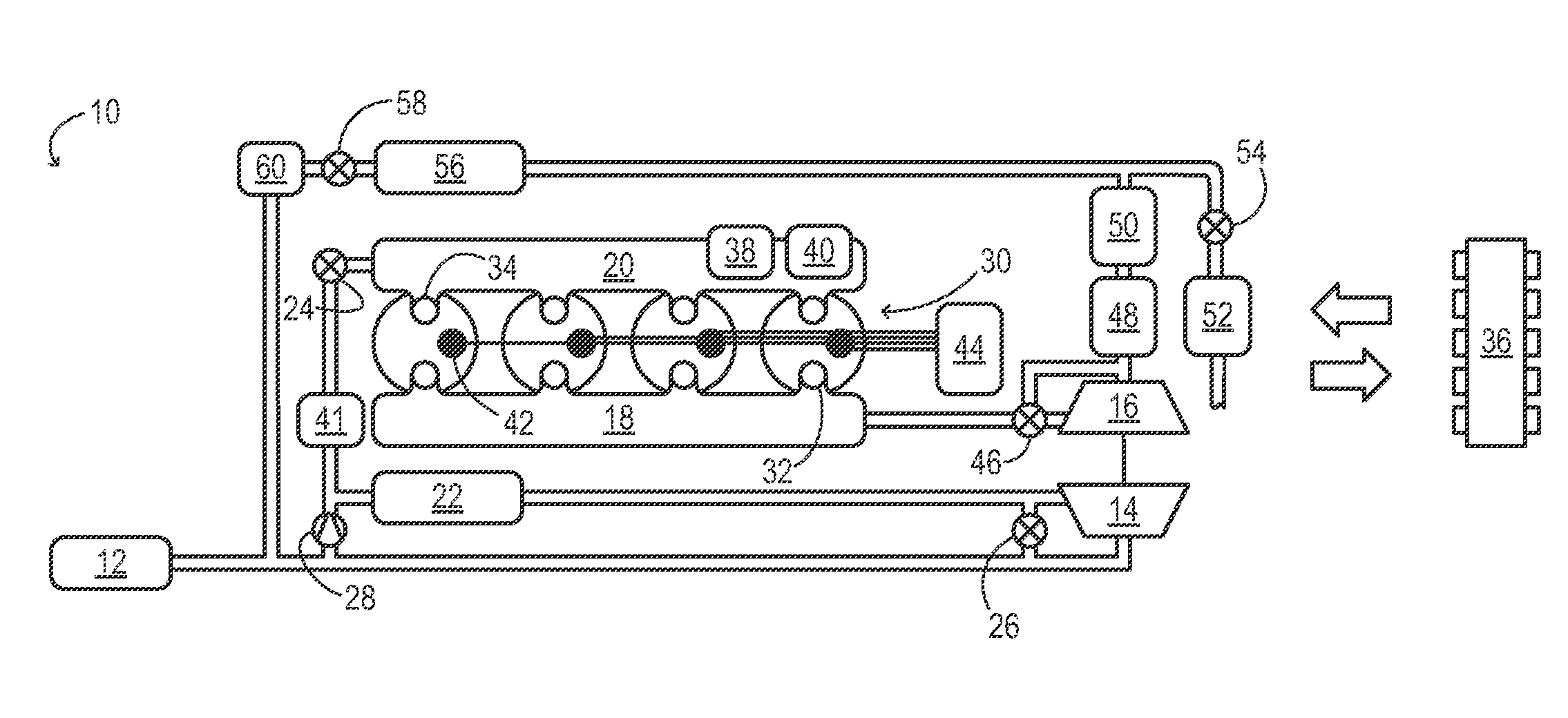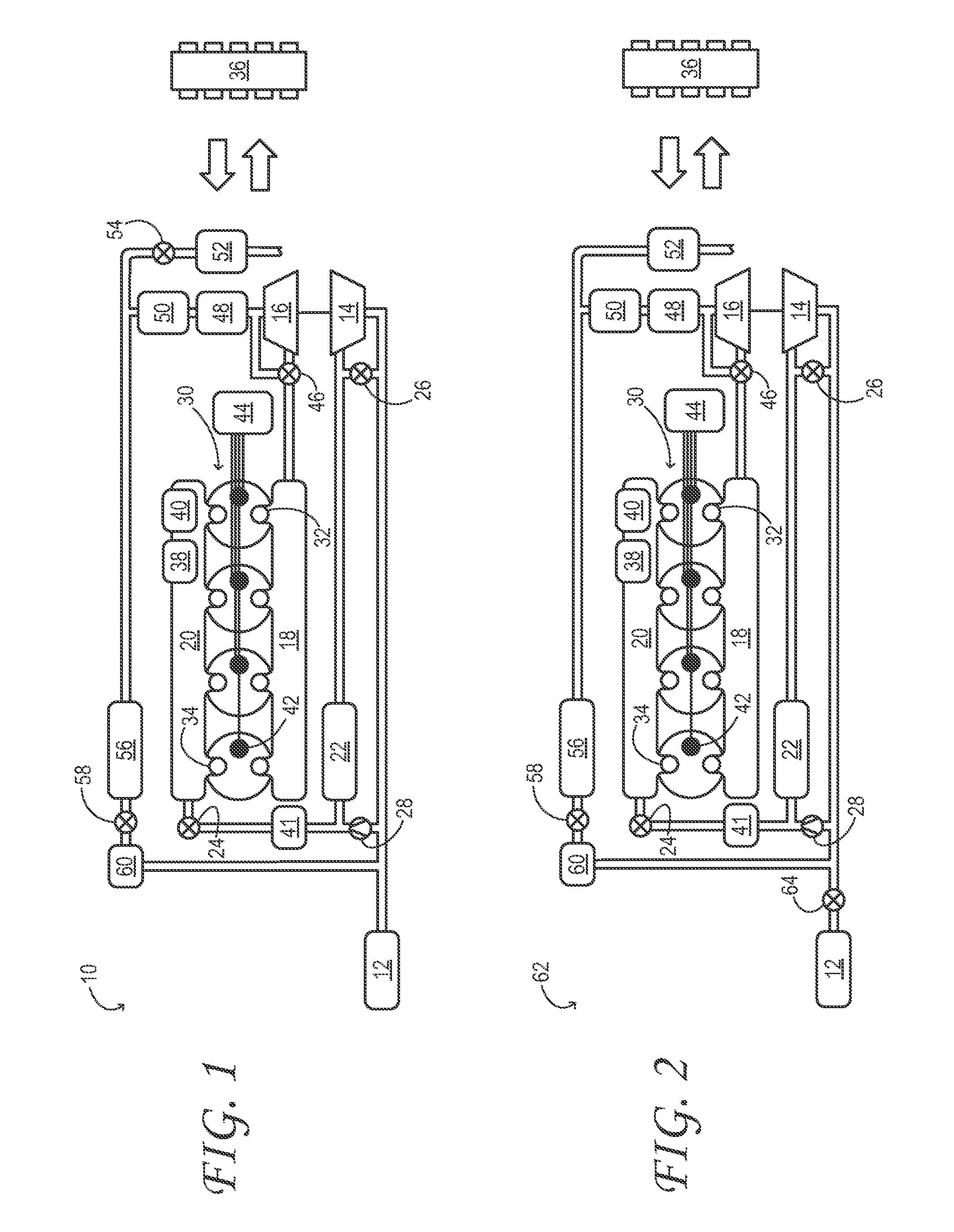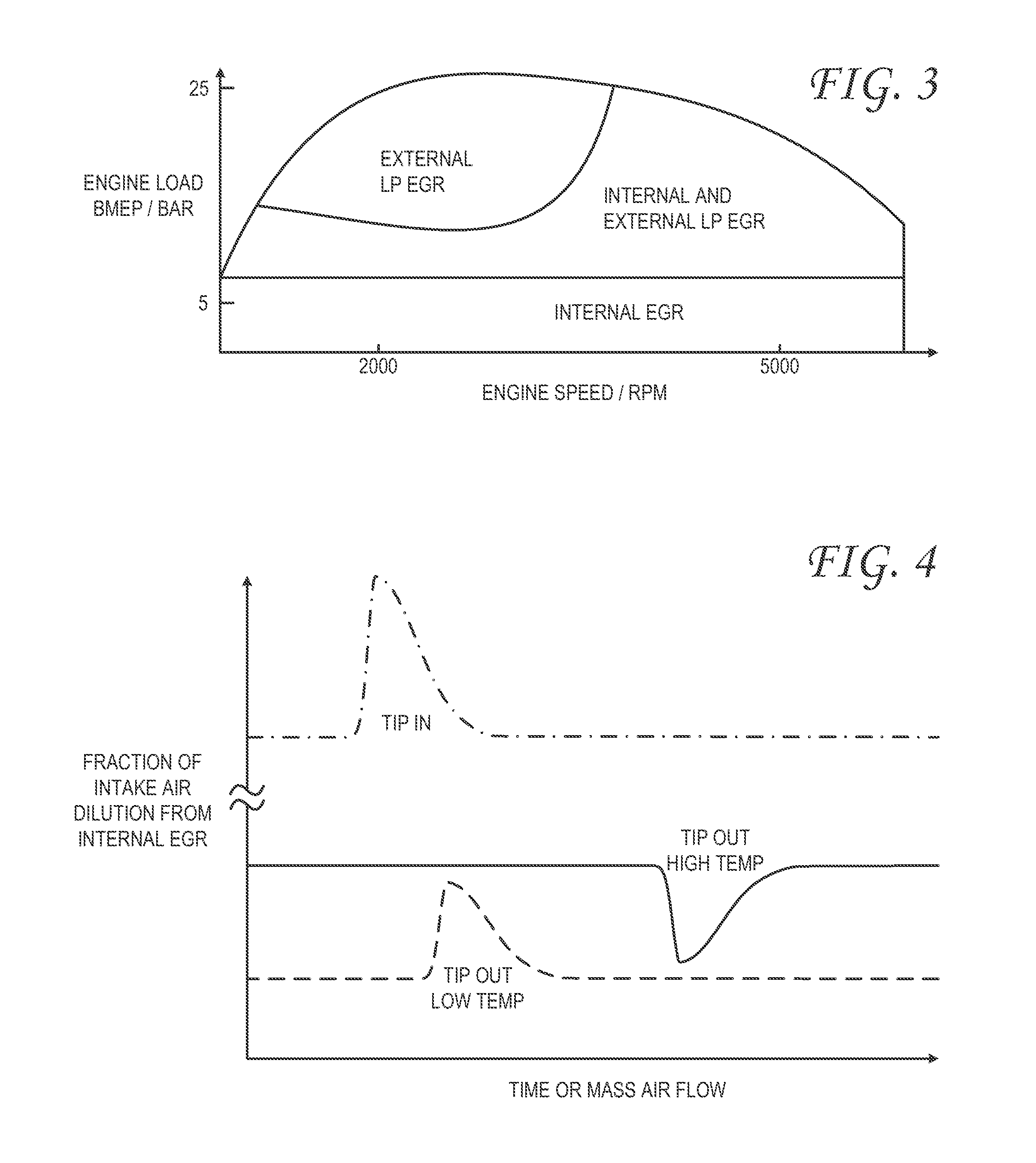Combustion stability enhancement via internal EGR control
a technology of combustion stability and internal egr control, which is applied in the direction of electric ignition installation, machines/engines, mechanical equipment, etc., can solve the problems of increasing the nitrogen-oxide (nosub>x/sub>) emissions of the engine, accelerating the ageing of materials, and reducing combustion and exhaust temperatures. , to achieve the effect of reducing the oxygen content of the engine, increasing the combustion and exhaust temperature, and increasing the emission of nitrogen-oxide (nox
- Summary
- Abstract
- Description
- Claims
- Application Information
AI Technical Summary
Benefits of technology
Problems solved by technology
Method used
Image
Examples
Embodiment Construction
[0018]Aspects of this disclosure will now be described by example and with reference to the illustrated embodiments listed above. Components, process steps, and other elements that may be substantially the same in one or more embodiments are identified coordinately and are described with minimal repetition. It will be noted, however, that elements identified coordinately may also differ to some degree. It will be further noted that the drawing figures included in this disclosure are schematic and generally not drawn to scale. Rather, the various drawing scales, aspect ratios, and numbers of components shown in the figures may be purposely distorted to make certain features or relationships easier to see.
[0019]FIG. 1 schematically shows aspects of an example engine system 10 in one embodiment. In engine system 10, fresh air is inducted into air cleaner 12 and flows to compressor 14. The compressor may be any suitable intake-air compressor—a motor-driven or driveshaft driven superchar...
PUM
 Login to View More
Login to View More Abstract
Description
Claims
Application Information
 Login to View More
Login to View More - R&D
- Intellectual Property
- Life Sciences
- Materials
- Tech Scout
- Unparalleled Data Quality
- Higher Quality Content
- 60% Fewer Hallucinations
Browse by: Latest US Patents, China's latest patents, Technical Efficacy Thesaurus, Application Domain, Technology Topic, Popular Technical Reports.
© 2025 PatSnap. All rights reserved.Legal|Privacy policy|Modern Slavery Act Transparency Statement|Sitemap|About US| Contact US: help@patsnap.com



